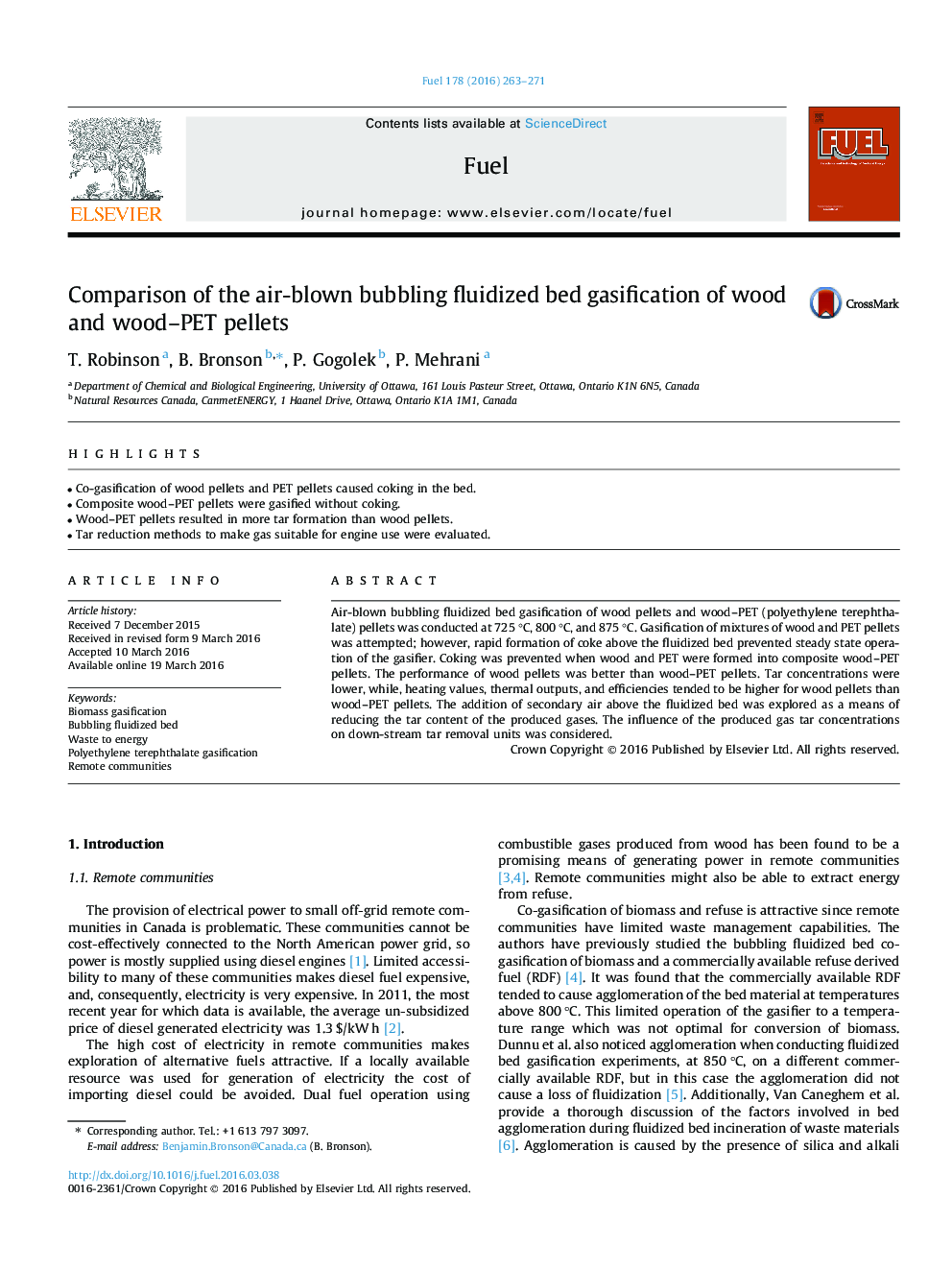| Article ID | Journal | Published Year | Pages | File Type |
|---|---|---|---|---|
| 205019 | Fuel | 2016 | 9 Pages |
•Co-gasification of wood pellets and PET pellets caused coking in the bed.•Composite wood–PET pellets were gasified without coking.•Wood–PET pellets resulted in more tar formation than wood pellets.•Tar reduction methods to make gas suitable for engine use were evaluated.
Air-blown bubbling fluidized bed gasification of wood pellets and wood–PET (polyethylene terephthalate) pellets was conducted at 725 °C, 800 °C, and 875 °C. Gasification of mixtures of wood and PET pellets was attempted; however, rapid formation of coke above the fluidized bed prevented steady state operation of the gasifier. Coking was prevented when wood and PET were formed into composite wood–PET pellets. The performance of wood pellets was better than wood–PET pellets. Tar concentrations were lower, while, heating values, thermal outputs, and efficiencies tended to be higher for wood pellets than wood–PET pellets. The addition of secondary air above the fluidized bed was explored as a means of reducing the tar content of the produced gases. The influence of the produced gas tar concentrations on down-stream tar removal units was considered.
